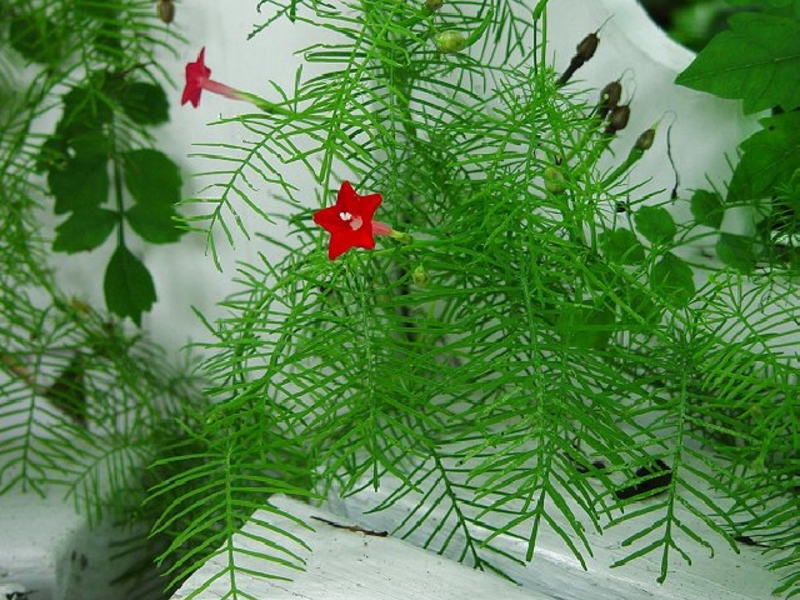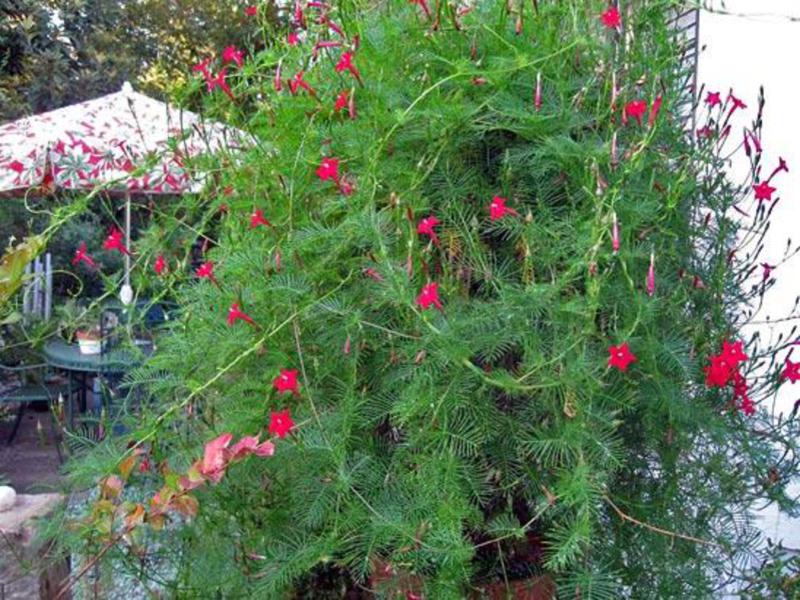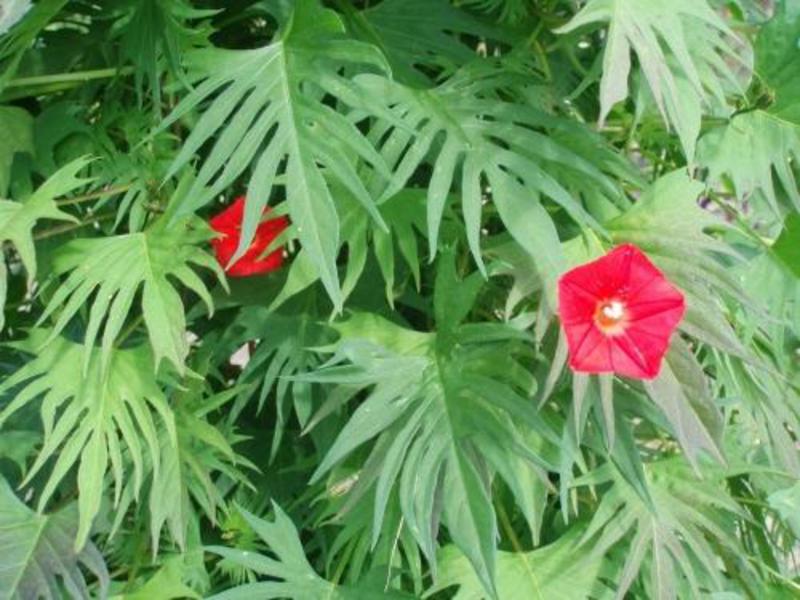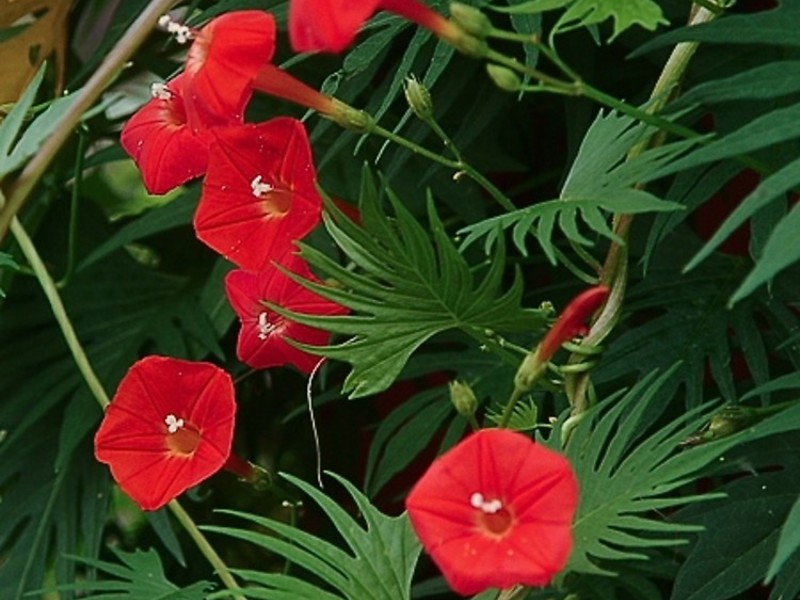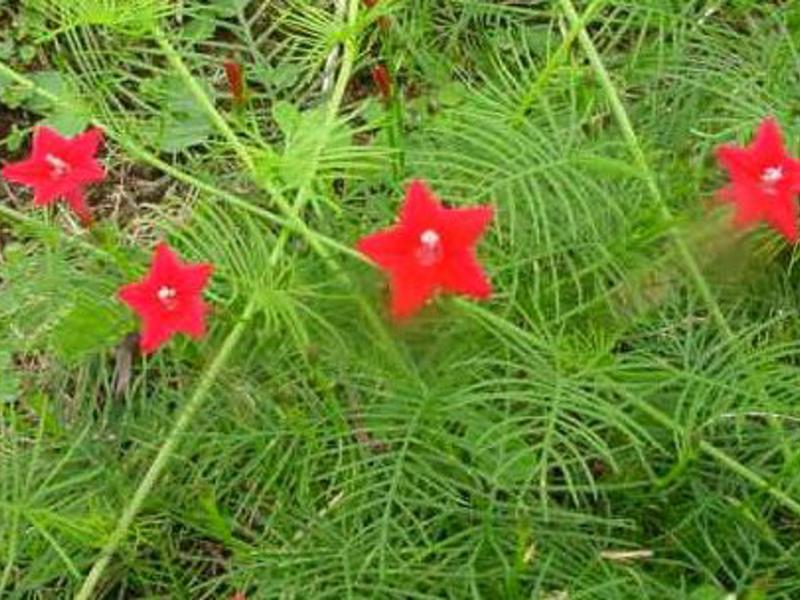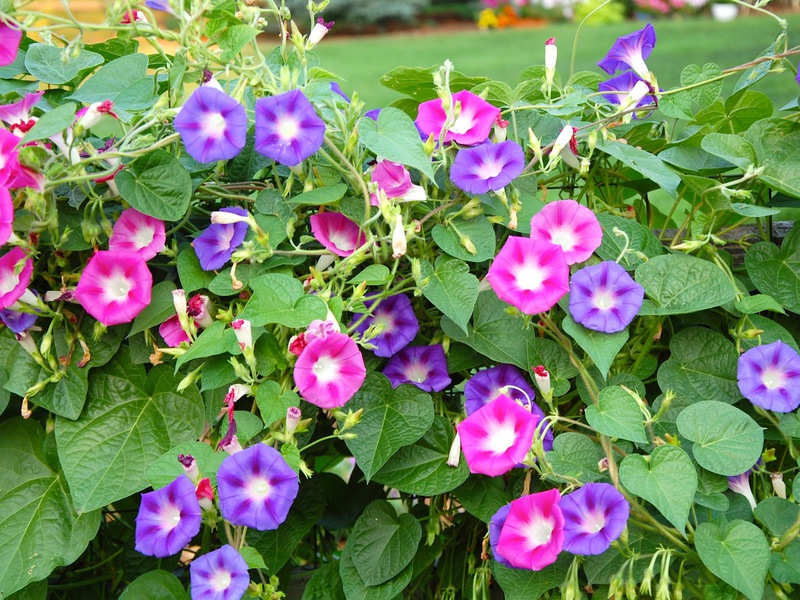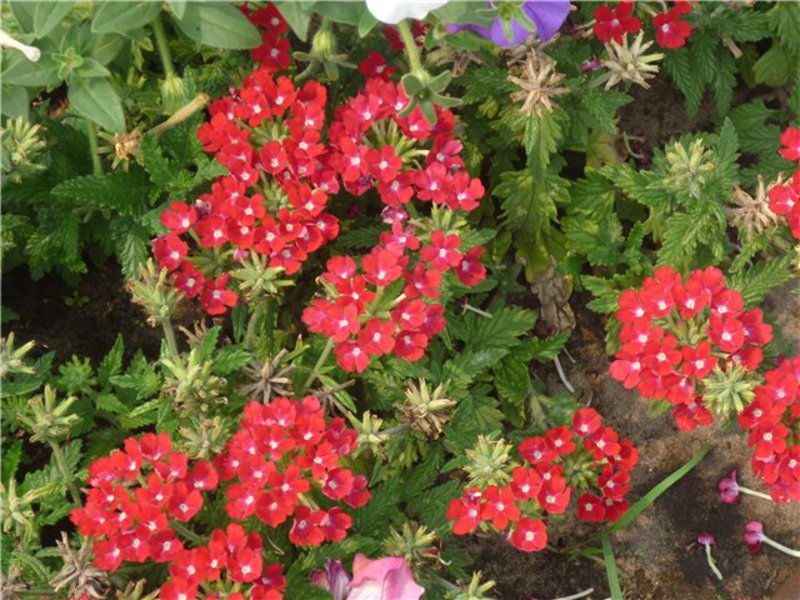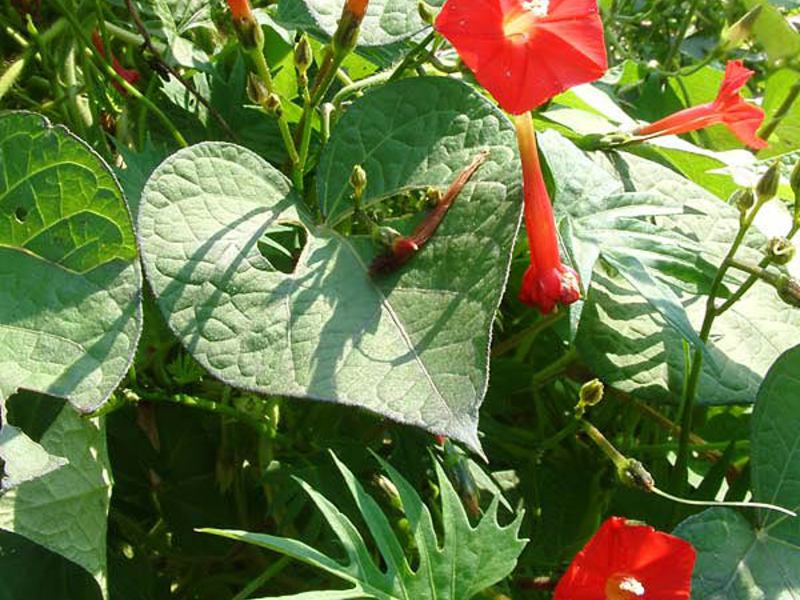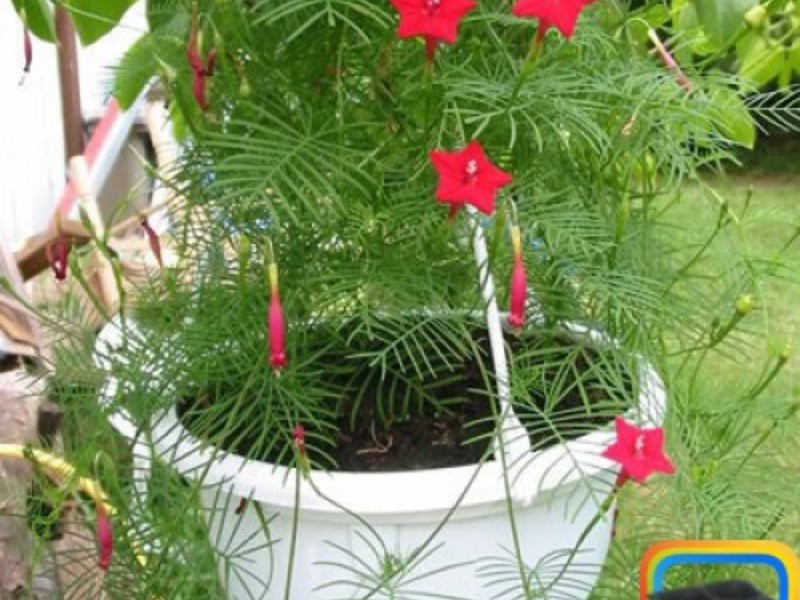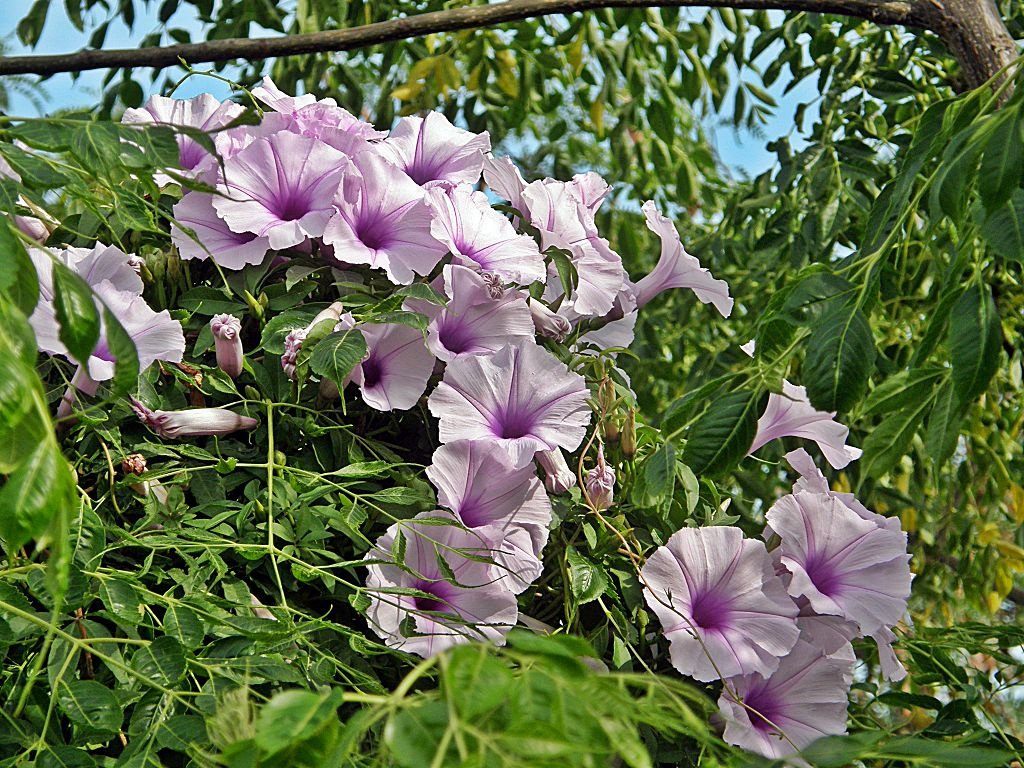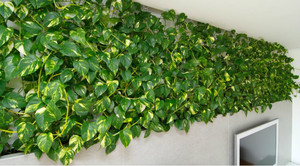The tropical liana morning glory kvamoklit looks amazingly beautiful and very impressive when landscaping gazebos, verandas, rabatok and fences. This fast-growing plant can become not only an exquisite decoration for a flower bed on your personal plot, but also an original disguise of unsightly buildings. That is why morning glory kvamoklit is very popular among gardeners. After planting, the plant quickly emerges and grows, and caring for it does not present any particular trouble.
Content
Description, varieties and photos of Ipomoea kvamoklit
Ipomoea kvamoklit or cypress liana is a tropical annual of extraordinary beauty. Its strong curling stems twine around the supports and grow up to 5 meters... The openwork light green leaves of the plant are dissected and resemble a fan. The tubular creeper flowers look like stars. Their color can be from white to bright red.
Morning glory begins to bloom in June and pleases with a "carpet" of red, pink or white flowers throughout the summer. The peculiarities of this liana include the fact that its flowers bloom early in the morning, close under the scorching sun, and bloom again in the evening.
Types of kvamoklite
Cypress liana originally from southern Mexico... Four of its species are grown in central Russia.
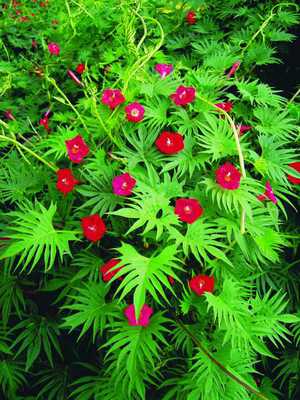 Slaughter's Kvamoklite is a delicate hybrid annual growing up to 1.5 m. Its intense red flowers blooming in the morning look like a cardinal mantle. Therefore, Slaughter is often called the Cardinal Vine among the people. Shiny leaves of the plant, 5-7 cm long, are dissected. Morning glory blooms from mid-summer until autumn.
Slaughter's Kvamoklite is a delicate hybrid annual growing up to 1.5 m. Its intense red flowers blooming in the morning look like a cardinal mantle. Therefore, Slaughter is often called the Cardinal Vine among the people. Shiny leaves of the plant, 5-7 cm long, are dissected. Morning glory blooms from mid-summer until autumn.- Kvamoklit pinnate is distinguished by its bright graceful flowers and openwork leaves of a dark green color. The star-shaped flowers of the plant can be carmine red, white or pink. The feathery vine grows rapidly. In one season in height, it can reach up to 2.5 m. Kvamoklite blooms from August to October.
- Kvamoklit fiery red has slender stems that grow up to 3 m. Its tubular scarlet flowers with a yellow throat about 1 cm in diameter. Heart-shaped leaves can reach 5-10 cm in length. "The beauty star" blooms for only one month - from June to July. Already in August the foliage of this vine turns black. For a longer time, the decorative effect of ivy-leaved fiery red kvamoklite lasts. It is distinguished by its effective parietal green foliage, which is dissected into five lobes.
- Kvamoklit lobed bindweed or Spanish flag is a spectacular unusual plant. Its strong reddish stems twist along the supports, and grow up to 3 m. Three thin stipules are formed near each three-lobed heart-shaped liana leaf. Each flower of the star bindweed is similar to a drop and has a length of up to 2 cm. A pistil and a stamen protrude from its throat. Ipomoea inflorescences of this species have a multi-flowered effect. Reaching a length of 15-25 cm, they are first red, then gradually turn orange, lemon yellow and soft cream.The lobed kvamoklite blooms from the beginning of August to the very frosts.
Kvamoklit: growing from seeds
Growing morning glory from seeds, over the summer you can get a beautifully flowering vine that will decorate the garden area. Pinnate kvamoklit does not tolerate transplants.
Sowing seeds for seedlings
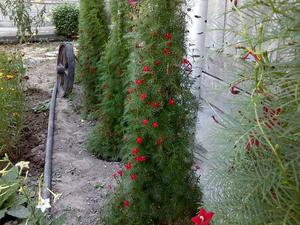 Seeds are sown in a seedling container or peat pots in March. Before sowing, the seeds are soaked in warm water for a day.
Seeds are sown in a seedling container or peat pots in March. Before sowing, the seeds are soaked in warm water for a day.
Seeds are placed in boxes with soil for flower seedlings to a depth of no more than 1 cm. Then the soil is watered with warm water. Seedling containers are covered with cellophane or glass and placed in a bright place in a room with an air temperature of at least + 20C. The resulting greenhouse effect will allow seeds to hatch quickly and seedlings to sprout together.
The seeds should hatch in about two weeks... When the first two true leaves appear, the seedlings dive into separate containers. This must be done very carefully, with a large clod of earth, so as not to disturb the roots. The cypress liana is planted in a permanent place in open ground in May.
Landing in open ground
Grow quamoklite from seeds possible directly in the open field... In this case, the vine will hurt less and will take root immediately. However, it will grow and bloom a little later.
The seeds are sown in a permanent place in May. They need to be located immediately at a great distance from each other (from 35-50 cm). The soil for planting morning glory should be loose. When digging, humus, organic fertilizers and sand should be added to it.
If possible, it is recommended to build a greenhouse, or cover the emerged seedlings with synthetic material.
Features of care for morning glory kvamoklit
In order for the liana to delight with its flowering already from the middle of summer, it needs create the right growing conditions... Some tips from experienced gardeners will help to facilitate the care and maintenance of the morning glory:
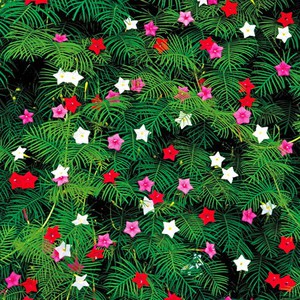 Kvamoklite shoots grow very quickly, therefore, a week after planting seedlings in the ground, you need to build a support for them. Otherwise, the foliage will begin to cling to each other, intertwining with each other. As a result, you can get a huge ball on which there will be almost no flowers.
Kvamoklite shoots grow very quickly, therefore, a week after planting seedlings in the ground, you need to build a support for them. Otherwise, the foliage will begin to cling to each other, intertwining with each other. As a result, you can get a huge ball on which there will be almost no flowers.- Ipomoea needs regular watering until August. This should be done every three days. About a liter of water will be enough for one plant. In dry summers, the frequency of watering increases.
- Caring for kvamoklite includes feeding the vines. The plant responds well to watering once a week with a solution of mineral fertilizers.
- Ipomoea leaves are strongly and quite often affected by spider mites. If you do not take any measures, then the plant may die. Getting rid of a pest can be quite simple. About three times a week, the vine should be sprayed abundantly with cold water directly from the water supply or well. If this does not help, then it is recommended to use special preparations sold in flower shops. Spraying with water, especially in the hot season, is also recommended for prophylactic purposes. It is better to do this in the evening.
- The yellow leaves of kvamoklite indicate that the vine lacks iron. You can help the plant with the help of fertilizers containing iron and even rusty nails dug into the ground.
- If pests are not observed in ipomoea, and the leaves are still curled, then this indicates an excess of feeding. In this case, you do not need to feed the plant for about two to three weeks.
Observing all the rules of care when growing cypress liana, from mid-July you will admire the unusually beautiful flowers of the plant.
Where to plant Ipomoea kvamoklit?
Before planting seedlings, you must decide on a permanent place of growth lianas.
There are many options where the plant will not just grow and bloom, but will decorate the fence, the walls of the building, the gazebo.
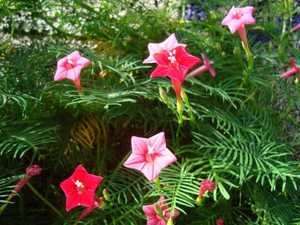 With the help of a feathery liana in the garden, you can get a spectacular green pyramid.To do this, supports up to 2 meters high must be planted in a circle with a diameter of 1 meter, and plants should be planted around them.
With the help of a feathery liana in the garden, you can get a spectacular green pyramid.To do this, supports up to 2 meters high must be planted in a circle with a diameter of 1 meter, and plants should be planted around them.- You can use kvamoklit to get shade on an open veranda.
- Transforms morning glory with its beautiful leaves and flowers any pillar, fence or tree trunk.
- With the help of kvamoklite, you can fence off the site, thereby designating a recreation area.
- A feathery vine will help you quickly hide the flaws of a building if you plant it near a wall.
- Ipomoea, planted along the fence, will fence off the site and protect it from the prying eyes of passers-by.
- Using dry and old trees for the base, green shapes can be made from kvamoklite.
- Ipomoea looks good on the foregrounds of arched compositions.
- The Twinkling Stars Seed Blend includes plants with white, red and pink flowers. Vines grown from it can be used to create a "green corner" on a loggia or balcony.
Ipomoea can decorate even baskets and vases... And her cut flowers will live for a long time in a vase of water, decorating the room.
To date, a large assortment of seeds of various varieties and mixtures of morning glory kvamoklita is on sale. Knowing the features of its planting, growing and care, you can effectively decorate a backyard or summer cottage.
